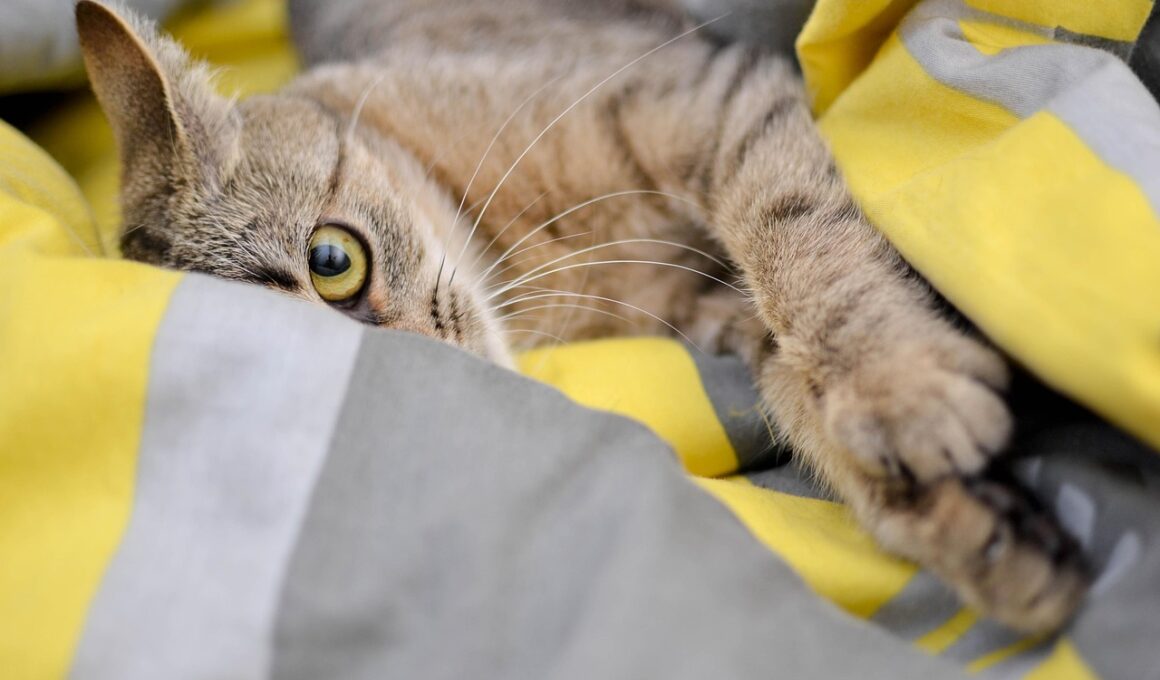Stress Triggers: What Causes Anxiety in Cats?
Understanding cat anxiety is essential for feline health and wellness. Multiple factors can contribute to heightened stress in your cat’s environment. Frequent changes in lifestyle, such as moving houses, can lead to insecurity, causing elevated anxiety levels. New family members, whether human or animal, also create disruption, necessitating careful introductions to maintain harmony. Poor living conditions, such as overcrowded spaces or inadequate resources like litter boxes, generate anxiety. Additionally, a lack of stimulation, such as engaging toys and interactive play, can exacerbate anxiety levels. Natural instincts urge cats to explore and hunt; failing to meet these needs can result in destructive behavior. Physical health must not be overlooked; underlying medical issues can trigger stress-related reactions. It’s imperative to monitor your cat’s health closely, ensuring that they are free from pain, injury, or illness. Easing your cat’s anxiety may require a multi-faceted approach: environmental modifications, consistent routines, or even veterinary assistance could be necessary. By addressing these different aspects, you can provide comfort and security for your feline companion.
Identifying Symptoms of Anxiety
Knowing the symptoms of cat anxiety enables owners to respond appropriately. Anxiety manifests in various behavioral changes that can be indicative of stress. Common signs include excessive meowing, hiding, or destructive behavior like scratching furniture or knocking items over. A cat may also exhibit changes in eating habits, either overeating or refusing food altogether, signaling distress. Litter box avoidance is another critical sign of anxiety; your cat may start eliminating outside their designated area, showcasing discomfort with their environment. Over-grooming, characterized by fur loss and skin irritations, is often a coping mechanism for anxious pets. Physical symptoms, such as trembling, dilated pupils, or aggressive postures, require immediate attention. Furthermore, if your cat clings to you excessively or displays signs of fear when encountering other pets or strangers, these can signal anxiety. Owners should remain observant, documenting changes in behavior to provide their veterinarian with accurate information. Once you note these symptoms, it becomes easier to develop an effective management strategy tailored to your cat’s specific needs and circumstances.
Stressful transitions in a cat’s life can be daunting. Moving homes, for instance, is a significant cause of anxiety in cats. Cats thrive in stable environments, and any alterations to their surroundings can lead to feelings of insecurity and apprehension. Introduction of new pets can compound anxiety; cats are territorial creatures, and the entry of another cat, dog, or any unfamiliar animal can spark territorial disputes. It’s essential to employ gradual introduction techniques to minimize friction. Similarly, changes in routine, such as switching meal times or altering from day to night schedules, can be sources of unease. Cats rely on predictability for safety and comfort. Environmental stressors, such as excessive noise from renovations or household chaos, can provoke anxiety. Establishing a calm atmosphere is crucial; try creating safe zones where your feline can retreat. Providing vertical space, like cat trees, helps them feel secure and in control of their environment. Regular interactive playtime fosters a bond, turning focus away from anxiety and reinforcing a sense of security. A stable environment tends to yield the happiest, least anxious cats, as they find comfort in predictability.
Separation anxiety is a common concern for pet owners. For many cats, prolonged absence of their owners can cause distress. Cats often form deep attachments to their humans, and when left alone for extended periods, they may feel vulnerable. To mitigate this, consider providing environmental enrichment like interactive toys to keep them occupied. Also, leaving an item with your scent can comfort your cat when you are out. Gradual desensitization can also help; practice short departures, gradually increasing the duration until your cat adjusts to your absence without distress. Additionally, maintaining routine before and after your departure reinforces security. Ensuring your cat has a predictable schedule can ease tension related to your absence. If necessary, consult with your veterinarian about anxiety medications or supplements to assist in managing your cat’s anxiety. Creating a predictable, enriching environment can reduce signs of distress associated with separation, steadily improving their well-being. Understanding that cats experience anxiety similarly to humans can help owners empathize and develop better management approaches to enhance their feline friend’s quality of life.
Changing caregivers can also induce anxiety in cats. Cats often require time to adjust to new people, which could include pet sitters or new family members. Understanding their unique personalities can help; some cats are more adaptable than others but keeping gradual introductions in mind is essential. Giving your cat time to explore new individuals at their own pace minimizes stress levels. Recognizing feline body language is crucial for identifying comfort or discomfort levels when meeting new people. Signs of fear or aggression indicate that your cat feels threatened and should have space. Encourage new caregivers to offer treats, allowing your cat to associate them with positive experiences. Creating a routine around caregiver interactions can foster familiarity, making transitions smoother. Additionally, maintaining consistent care practices with food, playtime, and grooming rituals reinforces a sense of security. It’s vital to maintain consistent communication with caregivers about your cat’s likes, dislikes, and typical behavior patterns. Entering a new household dynamic can be overwhelming, but careful planning can ensure successful and stress-free introductions and foster stronger, more confident relationships.
Physical Health and Anxiety Link
While emotional factors play a substantial role in anxiety, physical health cannot be ignored. Certain medical conditions can cause discomfort, leading to anxiety. Pain, particularly in older cats, is often unnoticed until it manifests as behavioral changes. Conditions like arthritis can severely impact a cat’s quality of life, causing them to become irritable or withdrawn. It’s essential to consult with your veterinarian regularly to address any potential underlying issues. Additionally, hormonal imbalances and illnesses can contribute to anxiety; hyperthyroidism, for instance, can result in increased activity and restlessness. The stress from medical issues can further exacerbate anxiety, creating a cycle difficult to break. Conduct periodic health assessments, including dental checks, as dental disease is common in cats and could cause pain. Maintaining your cat’s physical health is vital for emotional stability; a healthy cat is often less anxious. Provide a balanced diet along with regular exercise and mental stimulation. Recognizing the relationship between physical and emotional health is essential in treating and managing anxiety effectively, promoting overall well-being for your feline friend.
Finally, emphasizing preventative care plays a vital role in managing cat anxiety. Addressing potential stressors proactively enables owners to create a more tranquil environment for their felines. Regular enrichment, such as playtime or exploring new territories within the home, helps prevent boredom and encourages natural behaviors. Routine veterinary visits can catch health issues early, addressing potential anxiety triggers before they escalate. Creating and maintaining a stable environment fosters security, encouraging positive behaviors. Engaging in positive reinforcement training can also empower your cat, helping them adapt to changes with less stress. Providing a safe haven where your cat can retreat during stressful times is essential. Investing time in understanding your cat’s behavior and preferences enables you to develop strategies that cater to their specific anxiety triggers. It’s crucial to recognize signs of fear, anxiety, or stress early, addressing them timely and effectively. Building a close relationship with your feline through consistent care and understanding deepens the bond you share, aiding in stress reduction. A proactive approach to anxiety can ultimately lead to a happier, more confident cat.


